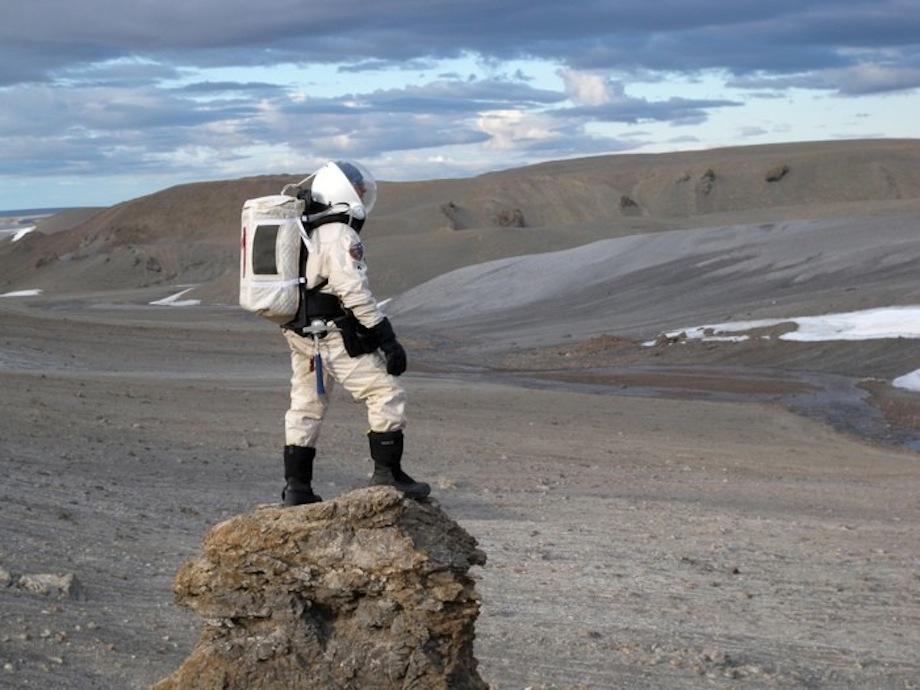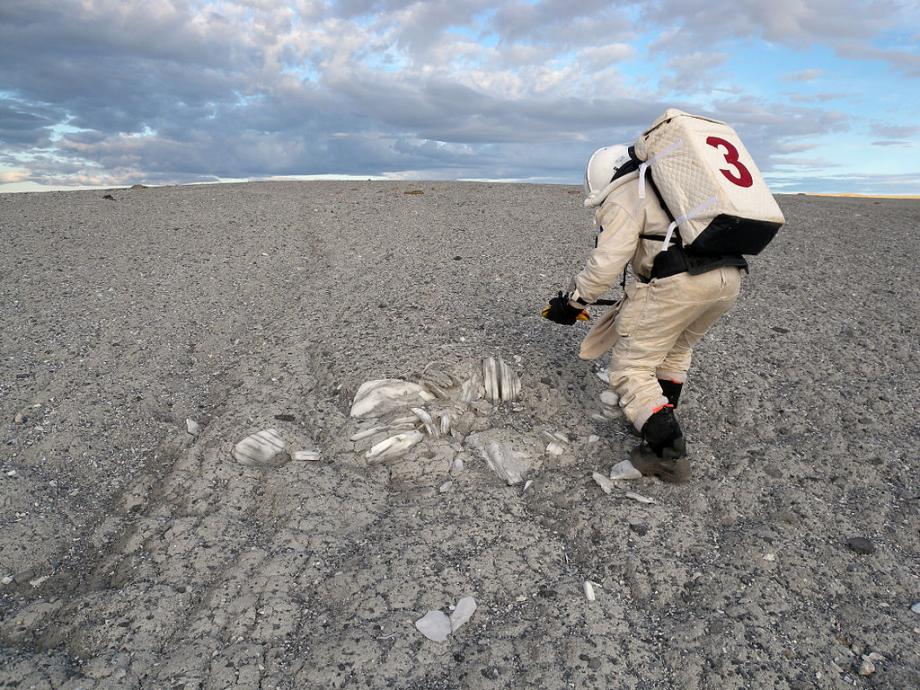The Closest Thing to Mars on Earth
Atlas Obscura on Slate is a new travel blog. Like us on Facebook, Tumblr, or follow us on Twitter @atlasobscura. Below is an excerpt from the forthcoming Atlas Obscura book.
Approximately 23 million years old, the Haughton Crater on Devon Island in Nunavut is one of the world's northernmost impact craters, and about the closest thing to Mars on Earth. For NASA, and anyone interested in a mission to Mars, this crater is the starting place for what one day may be the first human voyage to a neighboring planet.
The crater itself wasn't found until the 1950's when it was spotted in aerial photographs. Named after Reverend Samuel Haughton, a British naturalist who wrote the first geological account of the Arctic Archipelago, the crater lies in what is called the "frost rubble zone," a type of polar desert environment. It is the only impact crater known to exist in such an environment, and despite its age, has undergone little erosion due to the lack of liquid water and vegetation in the area.
These factors, along with the crater's geology, make the freezing, desert-like landscape perhaps the closest approximation to the Martian environment that can be found on Earth. In 1997 the location became the base of the Haughton-Mars Project, where practice has begun for a future Mars mission. Among the research projects located there is FMARS or the Flashline Mars Arctic Research Station. Here a crew of six, dressed in full spacesuits, simulate various missions and emergency scenarios. These psuedo-nauts experiment with "Low Level Laser Light Therapy" as a way to keep future Mars explorers limber during long exposure to the cold, and simulated emergencies such as depressurization, fires, and toxic chemical leaks.
Researchers inhabit the crater only during the summer months, as winters at this latitude are too cold and sunless, for even the likes of the FMARS crew.
More photos of the Haughton Impact Crater can be seen on Atlas Obscura
Martian landscapes here on Earth:


